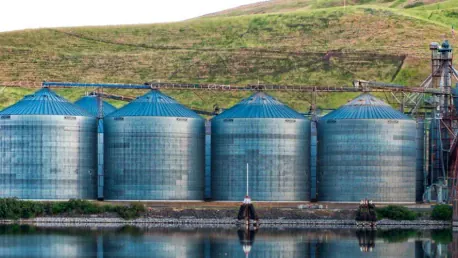Statera Energy has unveiled plans to build the UK’s first utility-scale green hydrogen facility in Aberdeenshire, marking a monumental step in the country’s renewable energy journey. The Kintore Hydrogen project, as it is known, is designed to harness excess renewable energy, primarily wind power, to produce green hydrogen. This project aligns with the UK’s overarching strategy to fortify its renewable energy infrastructure and achieve significant decarbonization targets. With a starting operational capacity of 500 MW by 2028 and an impressive potential expansion to 3 GW, the facility is poised to play an integral role in the national energy grid. The initiative is expected to directly address surplus renewable energy by converting it into storable and usable hydrogen, ensuring that no renewable energy goes to waste. In doing so, the project is anticipated to cut down CO2 emissions by up to 1.4 million tonnes annually, contributing significantly to the UK’s green goals.
Integration of Renewable Energy to Produce Green Hydrogen
The Kintore Hydrogen project is a testament to the increasing importance of green hydrogen within the renewable energy sector. Leveraging sources like wind power, the facility will produce hydrogen through electrolysis, a process that splits water into hydrogen and oxygen using electricity. By capturing and converting surplus energy, this project will help prevent the wastage that often occurs when renewable sources generate more power than the grid can handle. This approach not only maximizes the efficiency of renewable energy but also enhances energy security by providing a reliable storage solution. Green hydrogen can be stored and subsequently used for various applications, from fueling industrial processes to generating power during periods when renewable sources are less productive.
Tom Vernon, the CEO of Statera Energy, has highlighted the project’s vast potential to impact the UK’s hydrogen economy. According to Vernon, the Kintore Hydrogen project will not just support existing renewable energy frameworks but also create new opportunities for the hydrogen market. Green hydrogen produced by the facility can be integrated into different sectors, thereby facilitating the decarbonization of industries that are traditionally hard to transition away from fossil fuels. As a result, this initiative aligns seamlessly with the broader UK goals of achieving net-zero emissions while fostering energy independence. The strategic use of surplus renewable energy can help stabilize the grid and lower dependency on imported fossil fuels, thus ensuring a cleaner, more self-reliant energy landscape.
Economic and Employment Benefits
In addition to its environmental advantages, the Kintore Hydrogen project promises substantial economic and employment benefits. The construction phase alone is predicted to generate up to 3,500 jobs, providing a significant boost to local employment. Once operational, the facility is expected to create around 200 permanent positions, ensuring long-term economic benefits for the region. Statera Energy anticipates that the project will contribute £1 billion to the UK economy by 2035, underscoring its financial viability and potential to drive economic growth. The initiative also aims to capitalize on its strategic location near Scotland’s electricity network bottlenecks, providing a crucial solution to local energy distribution challenges.
Moreover, the project is expected to bring about considerable savings for UK consumers. The Electricity System Operator has projected that the strategic benefits of the Kintore Hydrogen project could save up to £5 billion, enhancing the overall efficiency and cost-effectiveness of the national grid. By converting surplus renewable energy into green hydrogen, not only is energy wastage minimized, but it also mitigates the need for extensive investment in other energy storage solutions. These economic incentives make the Kintore Hydrogen project a cornerstone of sustainable development, aligning economic growth with environmental stewardship.
Bolstering the Renewable Energy Sector
The Kintore Hydrogen project boasts not only environmental benefits but also significant economic and employment advantages. During its construction phase, it is predicted to create up to 3,500 jobs, offering a notable boost to local employment. Upon becoming operational, the facility is expected to create around 200 permanent positions, ensuring sustained economic benefits for the region. Statera Energy projects that the initiative will contribute £1 billion to the UK economy by 2035, highlighting its financial viability and potential to spur economic growth.
Strategically located near Scotland’s electricity network bottlenecks, the project aims to solve local energy distribution issues. Additionally, the Electricity System Operator forecasts that this project could save UK consumers up to £5 billion by enhancing the efficiency and cost-effectiveness of the national grid. By converting surplus renewable energy into green hydrogen, it minimizes energy wastage and reduces the need for costly investments in other energy storage solutions. The Kintore Hydrogen project, therefore, stands as a vital pillar of sustainable development, aligning economic growth with environmental responsibility.









